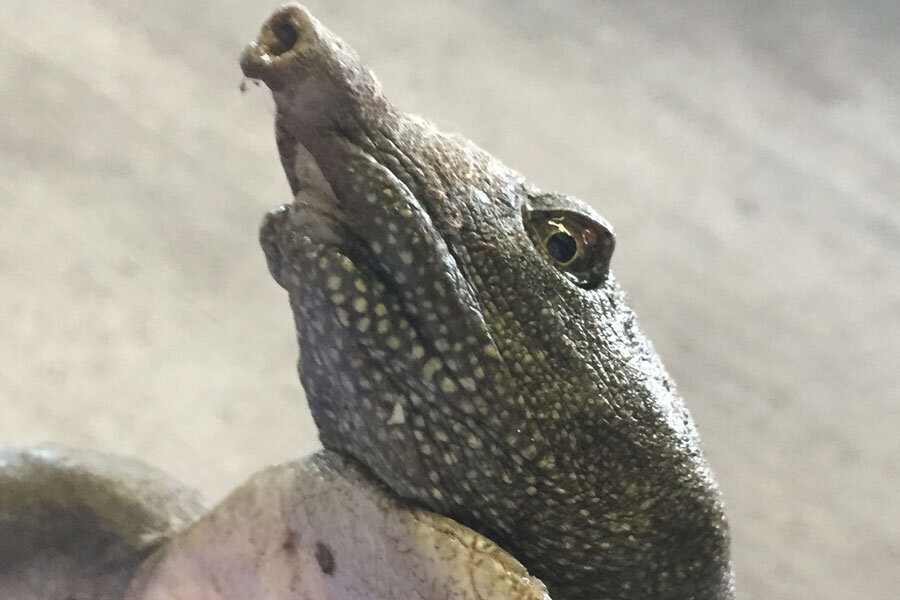Can New England prevent an invasion of Chinese turtles?
Loading...
Two Chinese soft-shell turtles were spotted on a beach in Quincy, Massachusetts, last week, and experts are concerned that even a small number of this potentially invasive species could disrupt New England's entire aquatic food web.
"It has this pointy face, and you immediately know it's something very different," zoologist Nigella Hillgarth, the president and CEO of the New England Aquarium, told the Associated Press. This "extraordinary-looking" turtle has a greenish-brown leathery shell and between 7 and 15 inches long.
The New England Aquarium suspects that somebody purchased the soft-shell turtle for food and then later decided to release it into the wild.
"It appears that someone is releasing this non-native and potentially invasive species into local waters," the aquarium said in a statement. "Their impact on local environments is unknown, but most invasive species have detrimental effects in non-native environments."
The species, whose scientific name is Pelodiscus sinensis, originates from brackish marshes in East Asia. More than 300 million are raised on farms each year for food. The turtles have established populations in Hawaii, California and Virginia, and they have already become an invasive species in the Philippines.
Soft-shell Chinese turtles have proved their ability to endure cold climates by establishing stable populations in northern Japan, Manchuria, and in the Russian Far East.
"The concern is that if it can establish a population, it actually can survive our winter," Hillgarth told the AP. "It could cause major changes in the ecosystem. None of the animals in that ecosystem are adapted to a predator of that size. It eats large amounts of small fish, mussels, clams and insects."
Charles Innis, head veterinarian at the aquarium, told the Boston Globe that the turtles "could compete with other native turtles, could carry disease to other native species, [and] could compete for food with other species."
New England has witnessed the repercussions of invasive species before. The European Green crab and the Asian Shore crab have been wreaking havoc in Boston Harbor for years.
The green crab, likely brought over from Europe in the 18th century, can eat as many as 40 half-inch clams in one day.
"An ecosystem thrives when there are many and varied species to fill different roles," notes the website for the School for the Environment at the University of Massachusetts Boston. And when non-native species such as the green crab and Asian crab are introduced, "the original ecosystem can easily become unbalanced and face population declines in its important inhabitants, like the native Atlantic rock crab, mussels and clams."
As for the two turtles, they remain in Dr. Innis's care, and the aquarium is continuing to attempt to educate the public on the potential danger of invasive species.
"The most important message is to not release any non-native pets like that," Hillgarth told the Globe.
The New England Aquarium urges the public to call their hotline at 617-973-5247 or local wildlife control to report any sightings of Chinese soft-shell turtles.







